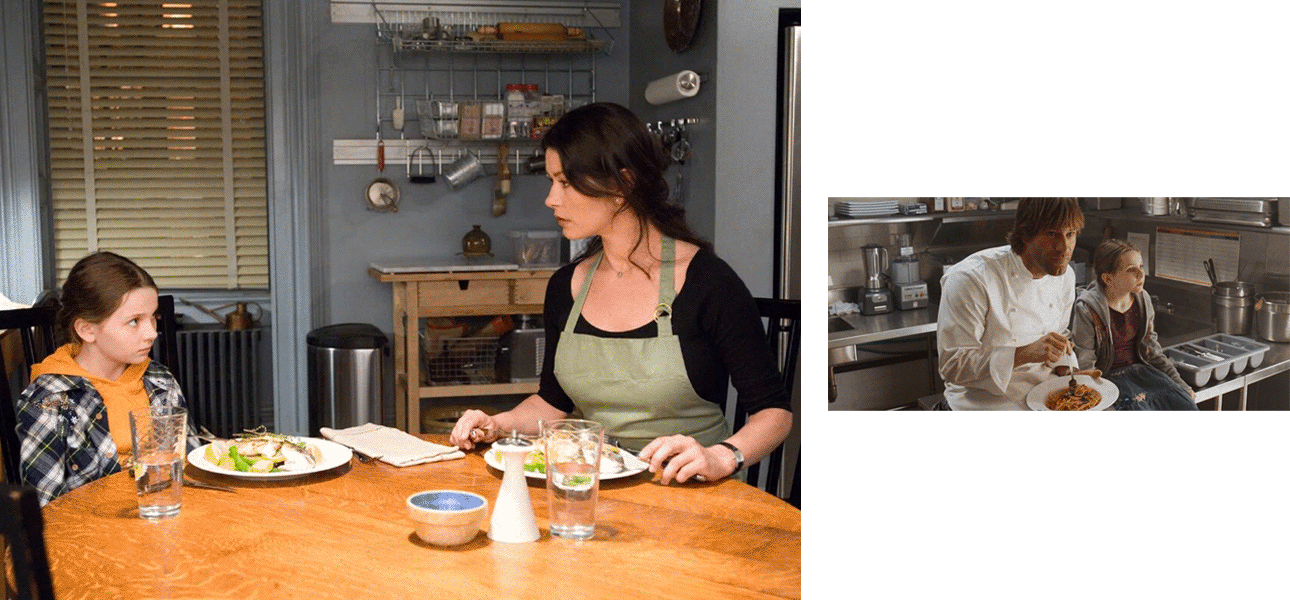Dear reader, we present to you our beauty columnist Inessa Tsarkova!
Inessa is an active nutritionist, gastroenterologist, therapist, naturopath and aromatherapist, health coach, integrative medicine doctor with a holistic approach. And now he will share with us his knowledge in the field of both physical and mental health, nutrition and much more.
In constant competition and stress, we often do not pay attention to what, when and how we eat. But the further fate of the eaten food depends on our eating behavior: how well it is digested and absorbed, whether it becomes a source of energy and building material for our cells or whether it remains in the intestines, subject to fermentation and decay processes. Today I will talk about the “5K” rules you need to follow to be healthy and beautiful.

Inessa Tsarkova
I named these rules after the initials of the questions you should ask yourself every time you eat to create healthy eating habits. Read and remember the main points of attention in our eating behavior – the rules of “5 K”.
1. When should you eat?
2. How should you eat?
3. How much should you eat?
4. What product combinations should there be?
5. How should the food be?
Let’s look at the five rules one by one.
When should you eat?
– You should eat when you are really hungry. That is, you “drool” at the thought of food.
— Breakfast should be “well-earned.” In the period between waking up and breakfast, it is useful to move intensively – for example, do morning exercises, go for a run (or at least go for a walk).
— It is important to leave a 3.5-4 hour gap between meals to allow time for the previous meal to be digested.
— In order not to disrupt the functioning of night hormones, the last meal should be 3.5-4 hours before bedtime.
— For the successful progression of physiological cycles, it is useful to comply with an 8/16 hour meal/fast interval (you can start with 12/12 intervals). For example, for the first meal, choose a time closer to 10-12 o’clock, and for the last one, choose no later than 18-20 o’clock.
— It is useful to take fasting days (fasting or eating raw) or meal breaks (optimally every one to two weeks).
How should you eat?

— Adapt to eating: Switch from sympathetic mode (activity mode) to parasympathetic mode (relaxation mode). These are necessary conditions for successful digestion. For example, you can activate the parasympathetic nervous system by using diaphragmatic breathing or square breathing. It is interesting that the prayer performed by the family at the common table before the meal began had such an effect.
– Chew food slowly and thoroughly (ideally 33 times per bite). Even liquid foods should be held in the mouth for a while before swallowing. It is not for nothing that there is a saying in Eastern yogic practices: “Eat liquids, drink solids”. Food in the oral cavity should be crushed as much as possible and abundantly saturated with saliva, turning it into a liquid porridge-like substance.
The first stage of digestion, which is especially important for the breakdown of complex carbohydrates, must occur in the oral cavity. Under the influence of salivary amylase, they are broken down into glucose, which is the end product of digestion. So, if you chew sugar-free bread for a long time, you will feel sweetness (the taste of simple sugars) in your mouth after a while. Not only carbohydrates, but also fats and proteins begin to be digested in the oral cavity. During this period, the brain manages to analyze the composition of food and give the appropriate commands to the gastrointestinal tract, so that the necessary enzymes are produced and the secretion of digestive juices begins for further digestion of food.
— While eating, it is important not to be distracted by extraneous things such as your phone, computer, television, conversations, or foreign thoughts in your head.
— It is better not to wash food and drinks immediately after eating (especially large amounts of cold drinks). This will slow down the digestive process. Try to drink it before meals (10-20 minutes). However, if necessary, drink only clean hot water and small sips.
How much should you eat?
– Do not overeat. Serving size should not exceed the size of your two palms (approximately the volume of the stomach floor).
– Do not snack or take bites between main meals.
— Stick to the ratio in food: raw/cooked 3/1. It is important to reach this ratio gradually. Start with 2/1 in favor of Ham.
— It is beneficial to eat at least three portions of raw vegetables and two to three portions of nuts/fruits a day.
What product combinations should there be?
Not every product is compatible with each other. There are special receptors in our intestines, or more precisely in the duodenum, that “recognize” what we eat, order the production of certain enzymes and hormones for the digestion and absorption of nutrients, and also activate intestinal motility. This phenomenon is called SDDP – the specific dynamic effect of food. When eating complex and unnatural mixtures, these receptors “freeze” and problems arise in digestion and the functioning of the gastrointestinal tract.
This is due to the fact that over the last 20 years the food industry, merging with the chemical industry, began to significantly change the composition and type of products. People increasingly began to use in their diets food products that are very different in composition from natural products that have been part of the human diet for thousands of years. As a result, the digestive organs began to work poorly and fail, nutrients were not adequately absorbed, and various diseases developed.
Friends, to create a healthy diet and take care of your health, it is important to remember both good and bad food combinations and try to apply these rules in practice.

good combinations
1. Raw vegetables, greens, root vegetables + cooked plant products (cereals, legumes, roots, seeds) or animal products (meat, fish, eggs).
It is better to separate the consumption of foods consisting primarily of complex carbohydrates from protein foods in different doses, since the enzymes that digest them work in different pH environments (some alkaline, others acidic). But they both go well with raw vegetables and herbs.
2. Boiled vegetables + legumes.
By the way, this is an excellent combination for gaining muscle mass. The healthiest way to cook legumes is in a pressure cooker, and make sure you soak them first. The best legumes: mung beans, chickpeas, peas, lentils. Beans contain a lot of saponins, which can cause increased gas formation. Therefore, it needs to be pre-soaked for 6-8 hours and cooked for a longer time (60-90 minutes).
3. Unpolished brown rice + legumes.
Interestingly, this particular combination of products is the main dish of Shaolin monks. Such dishes are an excellent source of protein, as they have a complete combination of amino acids. And they’re perfect for people who want to take care of their health by replacing some animal products with plant protein sources.
4. Grains, legumes, cooked root vegetables (e.g. turnips, sweet potatoes or potatoes) + fats (GHI oil, cheese oils or coconut oil, nuts or seeds).
Fats do not combine well with proteins, making them harder to break down and prolonging the time they spend in the stomach, but they do not have the same effect on the digestion of carbohydrates.
5. Raw vegetables and greens + oils (avocado, nuts, seeds).
Such combinations are perfect for creating light and nutritious designer salads.
bad combinations
1. Starch (potatoes, rice, cereals, flour) + acid (tomatoes, tomato paste, berries and fruits).
This is why fruit pizza and cereal are so unhealthy. With this combination, the work of enzymes becomes difficult, the food bolus acquires the consistency of a sticky mucous, glues the intestinal villi and creates favorable conditions for the proliferation of fermentative pathogenic microflora, carbohydrate metabolism is disrupted and gas formation increases.
2. Sugar (honey, sugar, fruits) + fat (butter, nuts).
Such combinations (for example, in sweets or ice cream) cause a strong blow to the pancreas and create conditions for the development of insulin resistance. Products with such combinations will also contribute to the formation of excess fatty tissue and weight gain.
3. Oil 1 + Oil 2.
For example, vegetable oils and animal fats. This combination creates an excessive load on the enzyme systems of the pancreas, which is especially noticeable in the presence of gallbladder dysfunction (which is quite common in modern humans).
Therefore, it is better not to eat complex mixtures of many different foods in almost the same proportion by volume. To prepare meals, it is better to take one or two main products (except vegetables and herbs) and add no more than 10% of natural flavors or nutritionally valuable additives. These can be not only aromatic spices and bitters (onion, garlic), but also sour fruits or citrus fruits, seaweed, seeds or nuts (best in the form of sauce).
How should the food be?
— From natural, whole, unrefined products in their natural form.
– Neither too hot nor too cold, ideally around 38-40 degrees.
– Be delicious and aromatic and increase appetite.
– It is served aesthetically and beautifully and is pleasing to the eye.
You need to admire the food, enjoy its taste and aroma. So our food should not only consist of the right foods eaten in the right way at the right time, but we should also love it.
Friends, the main thing is to remember that food (like everything we do in life) can only have the most beneficial effect on our health and resourcefulness in combination with hormones of joy and pleasure. Therefore, it is very important to be conscious in choosing food and meals and to follow your eating habits, as well as to enjoy the food you eat and imagine how beneficial it is for us. After all, eating is a sacrament and is actually a sacred act. So let’s treat it with respect and gratitude as a source of vitality, energy and joy!
Source: People Talk
Errol Villanueva is an author and lifestyle journalist who writes for The Fashion Vibes. With a passion for exploring the latest trends in fashion, food, travel, and wellness, Errol’s articles are a must-read for anyone interested in living a stylish and fulfilling life.





